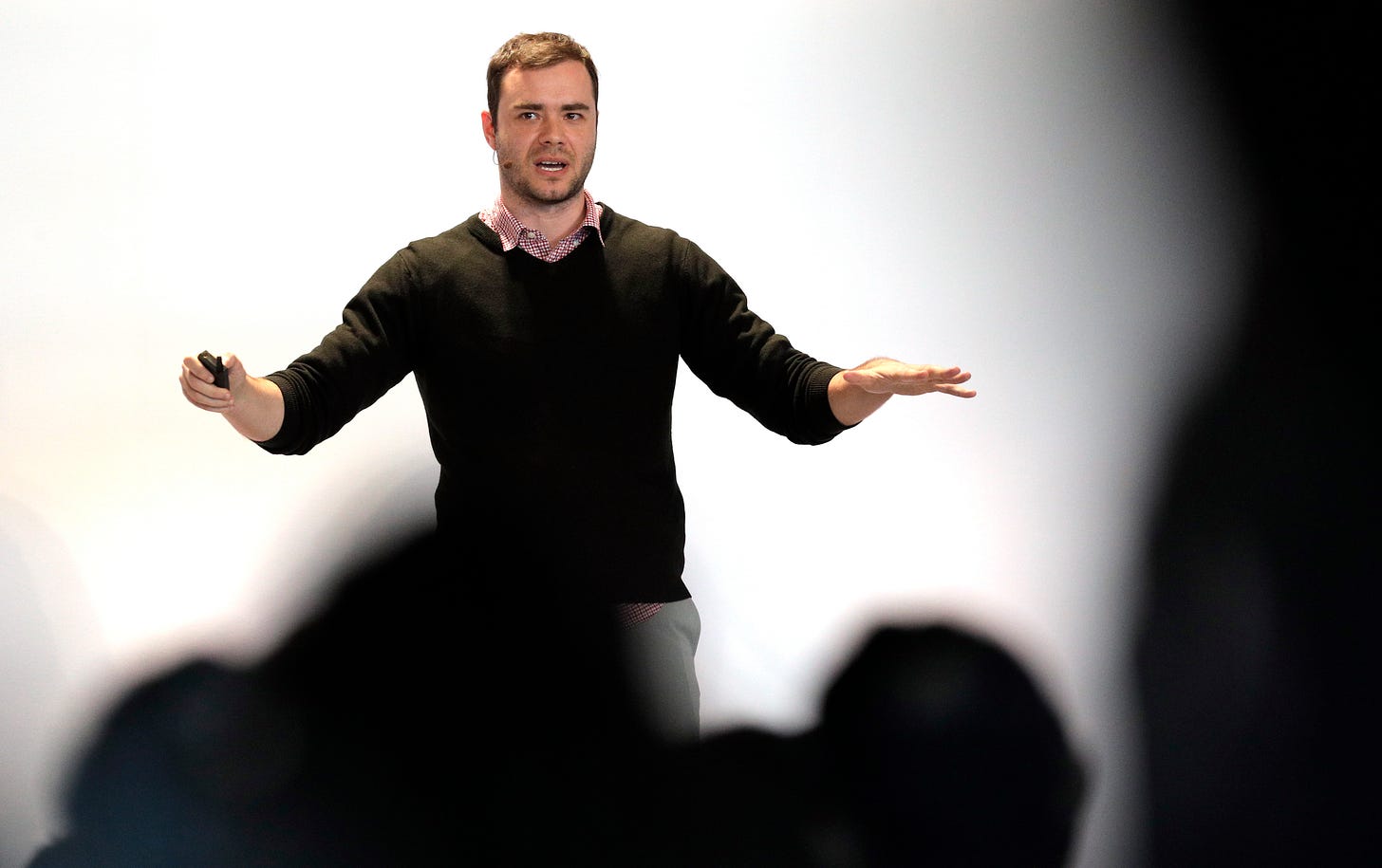OpenAI Cofounder Karpathy Says Great AI Agents Are Still a Decade Away. But There's Magic to Be Had in Incremental Work.
Plus, Sequoia's COO resigns over Shaun Maguire's comments about Mamdani
The Week in Short
Top AI researcher Andrej Karpathy sees a long road to AGI, even as Amazon robots promise to replace half a million people. The American Medical Association embraces AI, with caveats, as new Menlo Ventures data shows quick uptake by doctors. Relatedly, OpenEvidence raises $200 million. Sesame smart glasses get big dollars too. Sequoia’s COO quit over the firm’s tolerance of what she saw as Islamophobic comments by partner Shaun Maguire. Benchmark shores up partnership with Ev Randle. Josh Kushner’s Thrive Capital raises new funds. Reddit sues Perplexity as scraping battles rage.
The Main Item
AGI May Be a Distant Dream, but Amazon’s Robot Rollout Shows Intelligence Isn’t Everything
With AI hype in overdrive, comments this week from Andrej Karpathy, the OpenAI co-founder and former Tesla Autopilot lead, were a bucket of cold water for the industry.
Here was one of the most respected AI researchers arguing on the Dwarkesh Podcast that red-hot coding apps like Claude Code and Cursor were still pretty dumb, and that effective agentic AI would be a decade-long effort.
Oh, and AGI is most definitely not just around the corner, predictions from the likes of Sam Altman and Dario Amodei notwithstanding.
Karpathy contended that the coding apps, though impressive, lack the “continual learning” that would characterize a truly intelligent system, and thus get hung up on tasks that aren’t directly referenced in training data. The current crop of AI agents tends to get tripped up just a couple of steps into a job, for similar reasons.
Yet Karpathy’s message isn’t that of well-known AI skeptics like Gary Marcus and Ed Zitron, who believe that generative AI has fundamental limitations that will cap further progress, nor was he taking aim at the almost incomprehensible numbers being bandied about for data center buildouts, or arguing alongside those who are crying bubble.
Karpathy just thinks that progress will be incremental and — frustratingly for the techno-optimists — tied to practical, cost-effective utility. When AGI finally does arrive, he says, it will likely “blend into” normal productivity growth rather than trigger a singular leap.
As it happens, a New York Times story this week about Amazon offered a good illustration of what Karpathy was talking about. In fact, it provides an excellent framework for thinking through the practicalities — and implications — of broad-based AI deployment at big companies.
The e-commerce giant has been working to automate its warehouses for many years, acquiring the robotics company Kiva back in 2012 and working continuously to expand the range of tasks that could be done by machines. “AI” has not been a buzzword particularly, but there’s certainly varying degrees of “intelligence” in machines that can pick and pack boxes, and deliver them to specified places in a warehouse.
Now Amazon is beginning to integrate generative AI tech, acquihiring the foundational model company Covariant last year to build an in-house LLM. Already, Amazon executives said, the new AI is helping to improve the vision capabilities of the pick and pack robot called Sparrow.
Amazon now believes its robots will replace more than half-a-million jobs in the coming years, and aims to automate 75% of its operations.
Yet none of this is happening quickly or easily, nor is it the product of investment in “AI” in and of itself. Rather it’s the result of more than a decade of work in developing and implementing a range of technologies to accomplish clearly-defined business goals.
There’s every reason to think that successful AI deployments in large organizations will look something like this. Indeed, as Tom wrote this week, early adopters of agentic AI are finding that an enormous amount of upfront work is required to make the agents useful.
That’s not a bad thing — and to the extent AI progress means massive job losses and other societal disruptions, it’s probably a positive for it to happen incrementally. The trouble is, the economics of the generative AI industry are built on a promise of imminent transformational change.
“I live in what I view as an intermediate world where I want to collaborate with LLMs and where our pros/cons are matched up,” Karpathy wrote in a follow-up on X, while “the industry lives in a future where fully autonomous entities collaborate in parallel to write all the code and humans are useless.”
It is obviously the case that Sam Altman and others have promoted the idea that revolutionary AI capabilities are just around the corner because they need to raise the money to chase their vision. And there’s nothing phony about the unprecedented success of ChatGPT, and the way in which chatbots and other AI tools are already changing the world.
But from what we’ve seen, Karpathy is right that progress in deploying commercial AI will likely go as technological progress usually goes — in fits and starts, with dramatic advances and unexpected curves, and more slowly than the most ambitious promoters hope.
AI in Healthcare
Powerful Physician Lobbying Group Embraces AI (with Some Strings Attached)
The US healthcare system isn’t exactly known for flexibility and embracing change, but it’s adopting AI more quickly than many other industries, according to new research from Menlo Ventures.
The rapid uptake has prompted the American Medical Association to launch a new Center for Digital Health and AI to bring together physicians, tech leaders, and others to guide policy and establish proper benchmarks for the use of AI in medicine.
Tellingly, in the AMA’s formulation, the A in AI stands for “augmented.”




